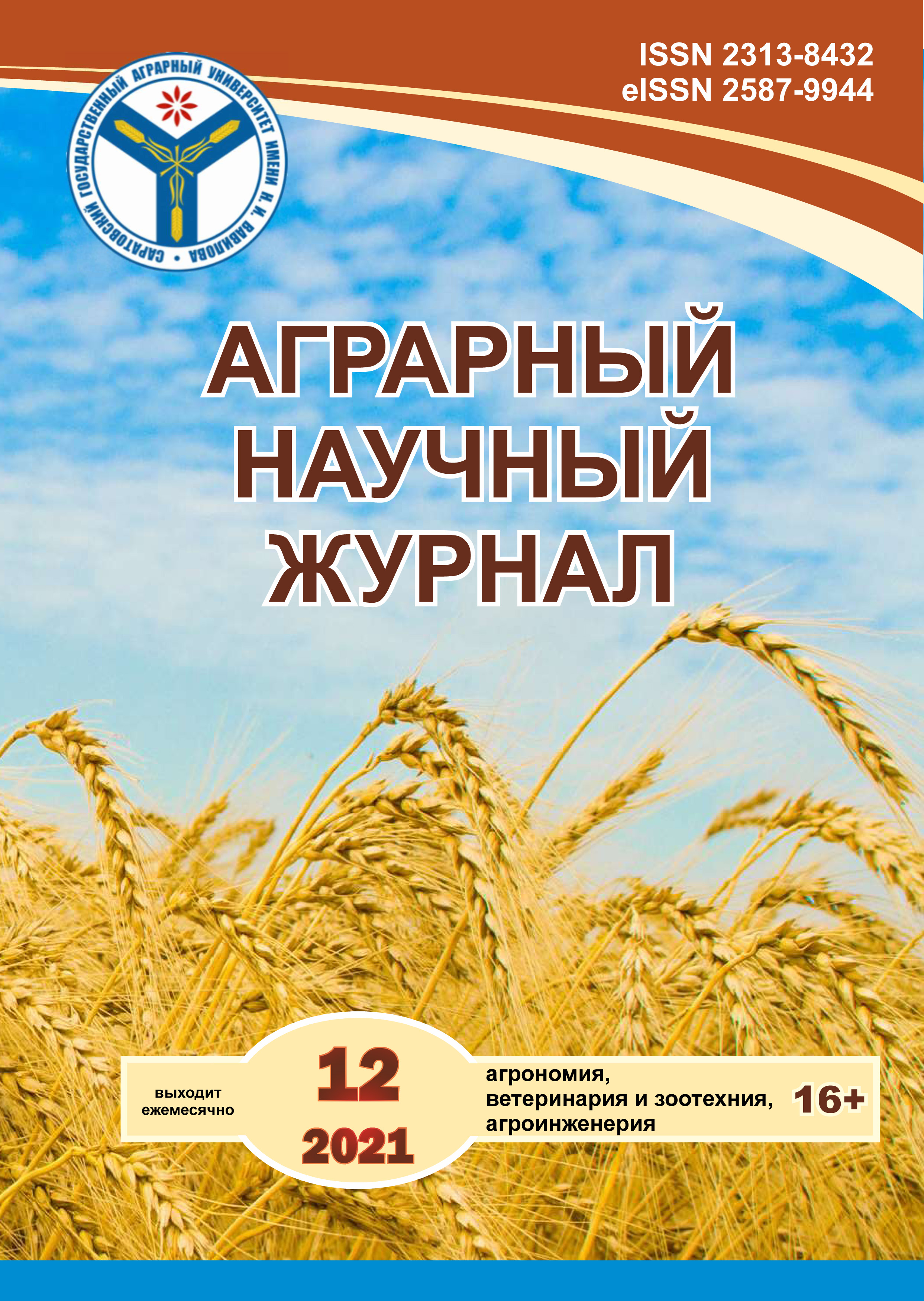Agrochemical indicators of sod-podzolic sandy loam soil under the influence of fertilizer mixtures with sewage sludge
DOI:
https://doi.org/10.28983/asj.y2021i12pp69-74Keywords:
sewage sludge, agrochemical indicators, sawdust, peat, straw, non-traditional organic fertilizer, yieldAbstract
The paper presents the data of a three–year field experience on the study of the effect of the combined introduction of sewage sludge (WWS) and additional organic substrates (sawdust, peat, straw) in different ratios (1: 1, 1: 2, 1: 3) on the content of basic nutrients sod–podzolic sandy loam soil and the yield of field crops in the crop rotation link: vetch–oat mixture – winter rye – spring barley. For comparative characteristics, the experiment included a variant with ready–made compost based on WWS. The content of the main nutrients in the plow horizon of the soil was in direct proportion to the share of WWS in the composition of the mixture. The most effective influence on the studied parameters was provided by the introduction of WWS with peat in a 1:1 ratio. For 3 years, the content of mineral nitrogen exceeded the effect of compost by 12.5–32.6%, mobile phosphorus – by 7.0–32.9%, exchangeable potassium – by 15.6–18.5%. With the introduction of WWS and peat (1: 1), there was a significant increase in the yield of field crops relative to the option with ready–made compost: vetch–oat mixture – by 37.5%, winter rye – by 9.2%, spring barley – by 10.0%. Other types of fertilizer mixtures with the participation of WWS also had a positive effect on the agrochemical characteristics of the soil and yield in comparison with the control. In the year of direct action, the biomass increase was 30.9–74.5% (vetch–oat mixture), in the first year of aftereffect – 21.5–53.4% (winter rye), in the second year of aftereffect – 56.4–94.8. The studied dose of WWS of 30 t / ha did not cause excessive accumulation of toxic elements in the grain of winter rye and spring barley.
Downloads
References
Аринушкина Е. В. Руководство по химическому анализу почв. 2-е перераб. и доп. М.: Изд-во Московского университета, 1970. 489 с.
Бойцова Л. В. Динамика агрохимических свойств в профиле дерново-подзолистых почв различного сельскохозяйственного использования // Агрофизика. 2016. № 1. С. 1–8.
Володина Т. И., Левченкова А. Н. Особенности поведения минерального азота в дерново-подзолистой супесчаной почве под влиянием различных систем удобрения // Молочнохозяйственный вестник. 2017. № 2 (26). С. 20–31.
ГОСТ 26207-91. Почвы. Определение подвижных соединений фосфора и калия по методу Кирсанова в модификации ЦИНАО. М.: Комитет стандартизации и метрологии СССР, 1991. 7 с.
ГОСТ 26951-86. Почвы. Определение нитратов ионометрическим методом. М.: Государственный комитет СССР по стандартам, 1986. 10 с.
ГОСТ Р 17.4.3.07-2001 Охрана природы. Почвы. Требования к свойствам осадков сточных вод при использовании их в качестве удобрений. М., 2001. 4 с.
Завьялова Н. Е., Косолапова А. И., Сторожева А. Н. Влияние возрастающих доз полного минерального удобрения на органическое вещество и азотный режим дерново-подзолистой почвы Предуралья // Агрохимия. 2014. № 6. С. 20–28.
Иванникова Н. А., Нефедов А. В. Изменение содержания аммиачного и нитратного азота в почве при комплексной мелиорации // Орошаемое земледелие. 2018. № 2. С. 25–26.
Мадаминова М., Абзалов А., Юсупалиева К. Значение применения медленнодействующих удобрений в снижении загрязнения окружающей среды // Научное обозрение. 2017. № 3. С. 70–79.
Пахненко Е. П. Осадки сточных вод и другие нетрадиционные органические удобрения: учеб. пособие. М.: БИНОМ. Лаборатория знаний, 2013. 311 с.
Пескарев А. А., Яшин И. М., Касатиков В. А. Агрохимические свойства дерново-подзолистой супесчаной почвы при применении удобрений на основе осадка сточных вод // Плодородие. 2011. №1. С. 9-11.
Русакова И. В. Биологические свойства дерново-подзолистой супесчаной почвы при длительном использовании соломы на удобрение // Почвоведение. 2013. № 12. С. 1485–1493.
СанПиН 42-123-4089-86 Предельно допустимые концентрации тяжелых металлов и мышьяка в продовольственном сырье и пищевых продуктах. М., 1986. 91 с.
Downloads
Published
Issue
Section
License
Copyright (c) 2021 The Agrarian Scientific Journal

This work is licensed under a Creative Commons Attribution-NonCommercial 4.0 International License.








